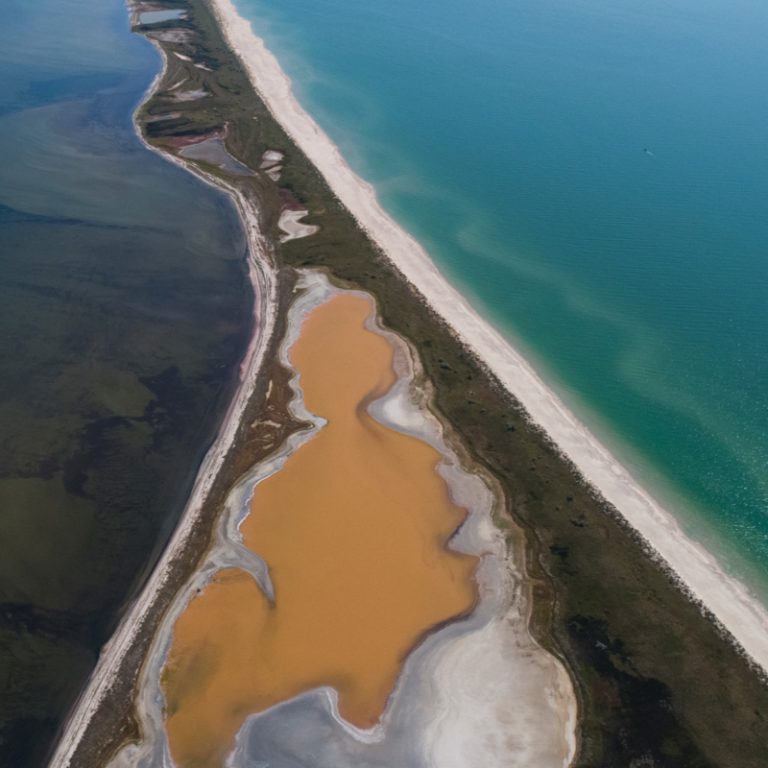Ukraine has the lowest number of protected areas among the countries of Europe — only 6% (of its territory — ed.). But even on the territories of national parks and reserves, illegal fishing, poaching, and land ploughing take place. Since 2015, the team of Tuzly Estuaries National Nature Park has been fighting with the consequences of negligent attitude towards nature. Now this is the place where artificial islands for birds, tourist routes, and birdwatching viewpoints are being created.
Protected areas of Ukraine make up 6.6% of its territory. This is quite low compared to the protected areas of other countries in the world, particularly, the European ones: in Poland, for example, 17% of the area is protected, and in Germany and Austria, the figure is more than 30%. While Ukraine is the largest country in Europe, it has the lowest protected area coverage.
National reserves and national parks are the most widespread types of protected areas in Ukraine. The distinctive feature of national parks lies in their twofold goal: to save nature and to share its beauty and resources, attracting tourists and allowing limited commercial activity on the territory of the park. Hence, keeping this balance is crucial to prevent human activity from harming nature.
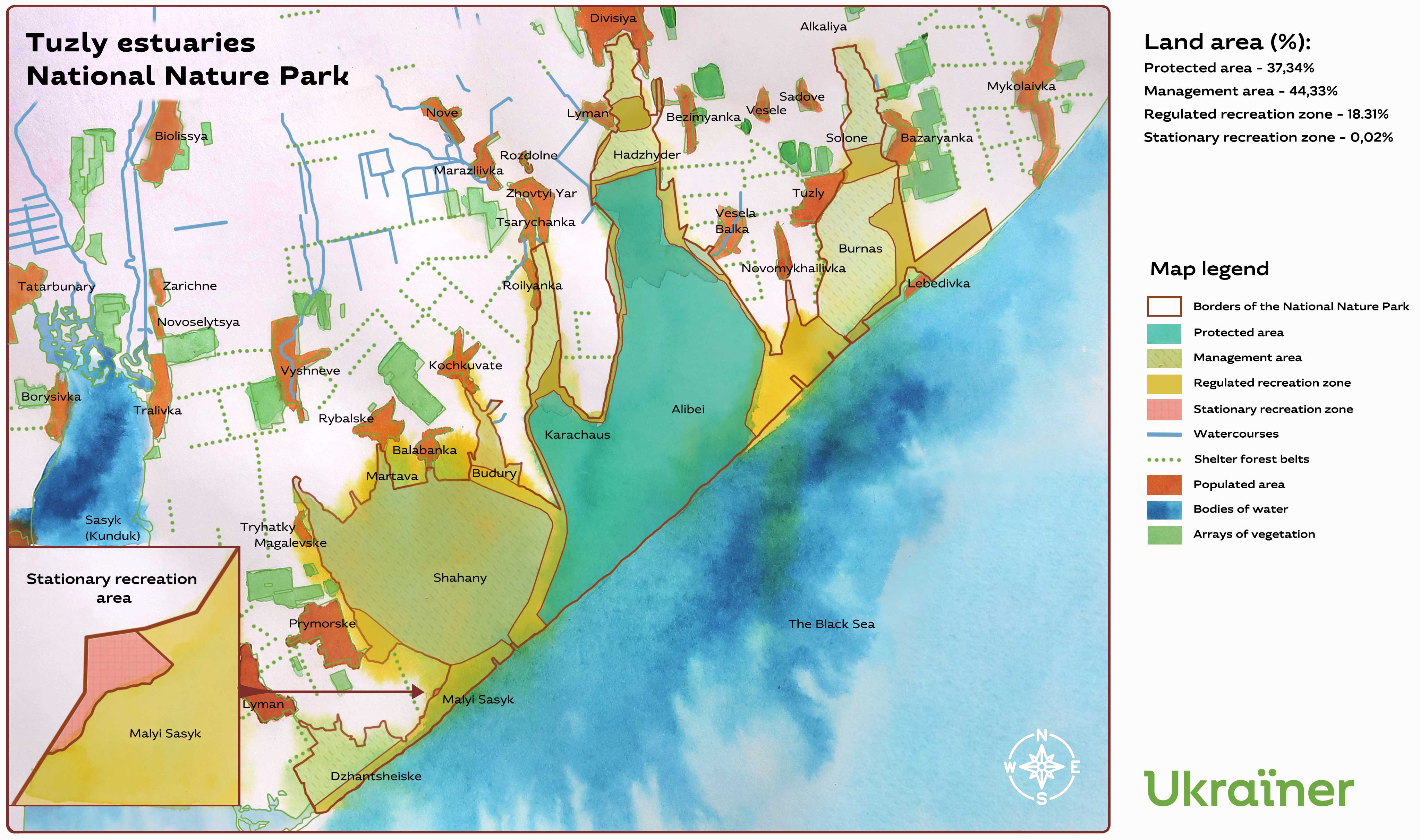
World-famous national parks strictly preserve this balance. Some parks allow restricted areas to be inhabited, while others do not. For example, Greenland’s National Park, the largest one by area in the world (972,000 square kilometres), has banned people from settling within the park, although tourists are welcome there. Yellowstone National Park, considered to be one of the first national parks ever, took a long road to find a balance and now is cited as an exemplary park.
On the contrary, in Ukraine, since Soviet times, hunting has been widely encouraged, and its illegal form, poaching, has significantly spread. Irrational use of natural resources has gradually become a new norm: hunting for red-listed species, deforestation, illegal commercial activity in protected areas, and so on. The consequences of such treatment towards nature are still to be overcome.
Earlier, we filmed a story about Tuzly Estuaries park, which over the last few years has managed to involve hundreds of volunteers, to start restoring Sasyk lake, and to bring offenders of nature to justice. You may read our first story about the park here: Tuzly Estuaries: Dolphins, Birds, and Volunteers.

Park’s routine. Ruslan Lupashko
Ruslan Lupashko is a ranger of Tuzly Estuaries national park. He is a local resident, originally from the village Zhovtyi Yar. He’s been surrounded by nature since childhood. This job for him is a chance to make at least a small contribution to save nature.
Ruslan’s working day starts at 5 am. He patrols the territory for several hours then returns home, getting back to patrolling at 5 pm. That’s how most of the year is, except for some months (usually from August to October) when he must work almost round the clock.
— When hunting and fishing season begins, we get a tighter schedule. We work, so to say, 24/7. Sure, sometimes we drop by home to get some sleep, some food. And this goes on for about one to two months.
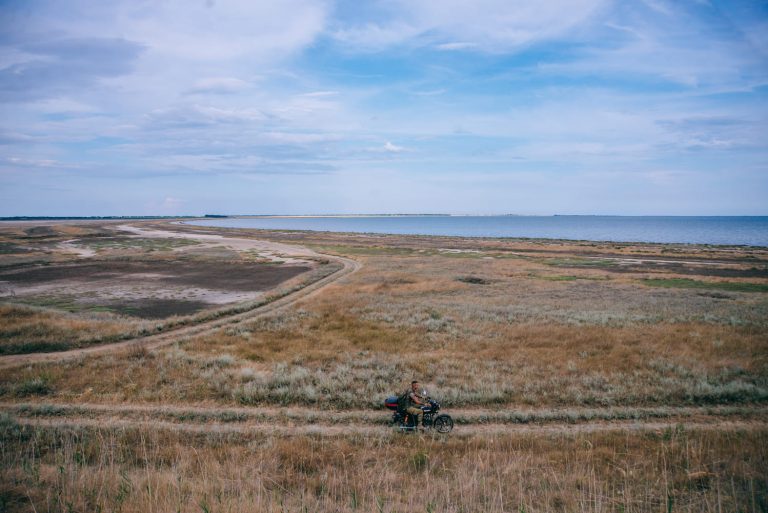
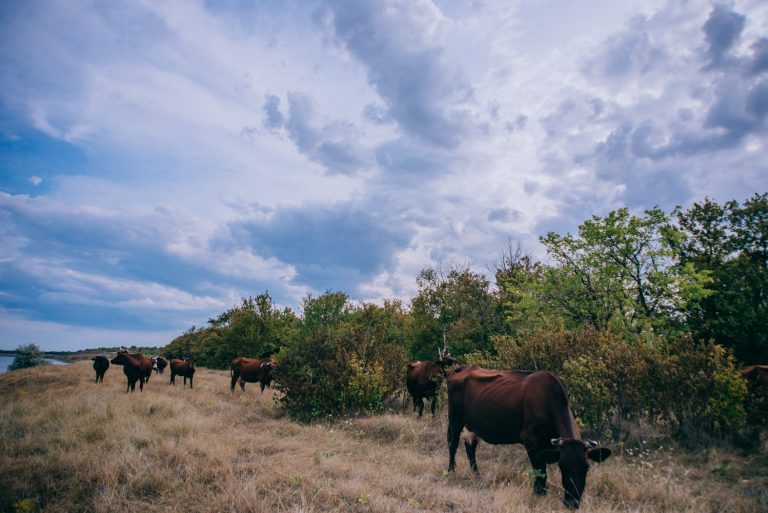
slideshow
Ruslan has to check if tourists in the park are legally present, if there are any poachers, and if everybody is observing the rules of conduct. The territory under Ruslan’s patrol is about 40 kilometres. Every day he chooses which part of the park to investigate.
If Ruslan encounters hunters, it’s up to him whether to confront them or leave them. According to the job description, he introduces himself, shows them his documents, and asks them to do the same. Ruslan will be able to hold accountable those hunting on the park’s territory, only if he sees their documents.
— As for hunters, it’s difficult to deal with them because we don’t have any weapons for self-defence. Hunters are always armed, and, quite often, buzzed. So it’s dangerous.
Once, he says, poachers set reeds on fire and were waiting for animals to escape getting out of there. Ruslan had a day off, but, having seen clouds of smoke, he set off for the crime scene.
— I saw the animals simply trying to save their lives, while they (poachers — ed.) were waiting for the animals to come out in order to shoot them. A minor, who, so to say, was learning from his relative, was with them.

Ruslan called firefighters and the police, informed the park’s management, and approached the poachers with a camera.
The criminal proceeding, initiated by the police, was being sabotaged on all levels, resulting in the arsonist paying a minimal fine, without confiscation of the weapon, which should have been done according to the law.
Local police are reluctant about calls from the park, since the issue of legality of certain actions often stumbles on the park’s vaguely marked borders — so called “natural borders”. There are fence and border markers but not everywhere.
Tourists and residents of nearby villages, and other guests of Tuzly Estuaries often misuse the lack of markers, saying they didn’t know that they already were on the park’s territory, since there was no sign.
The workers do know clearly where their territory begins and where it ends, as they rely on a cadastral map.
Earlier, there used to be set barriers, an attempt to control poachers. But the number of locations where they were hunting during different seasons was not going down. When the park’s administration changed — that is, when Ivan Rusiev’s team came in and started fighting illegal activities of hunters — it became clear that poachers simply didn’t recognise the park as a territory, belonging to the state and not them.
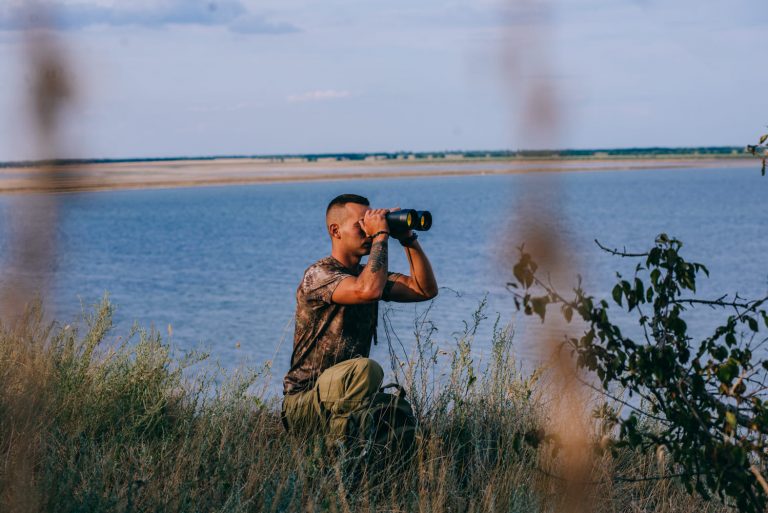
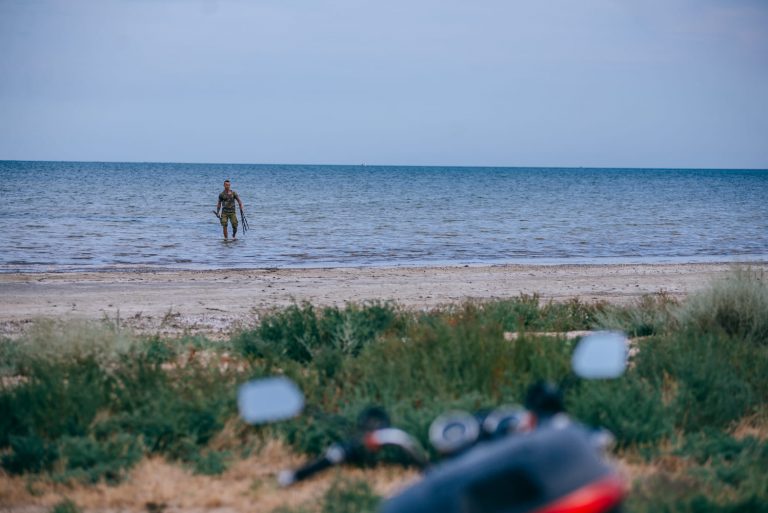
slideshow
There’s work for the body, and there’s work for the soul. While patrolling, Ruslan often takes photos of nature. He posts them on social media, sharing about the park.
— I started to take photos with a mobile phone. I did it for myself, then began to show them to my friends, people I know. They really liked the way I see the picture. I mean, they keep telling me: ‘We could pass by that place a hundred times but wouldn’t notice anything. You have another perspective.’
Ruslan says that a lot of people live in their daily routine and lack warmth. And this can be retrieved in the park, he believes.
— For me, the park is a place I love both as a job and space. The place where I can be alone, daydream, forget about negative factors.
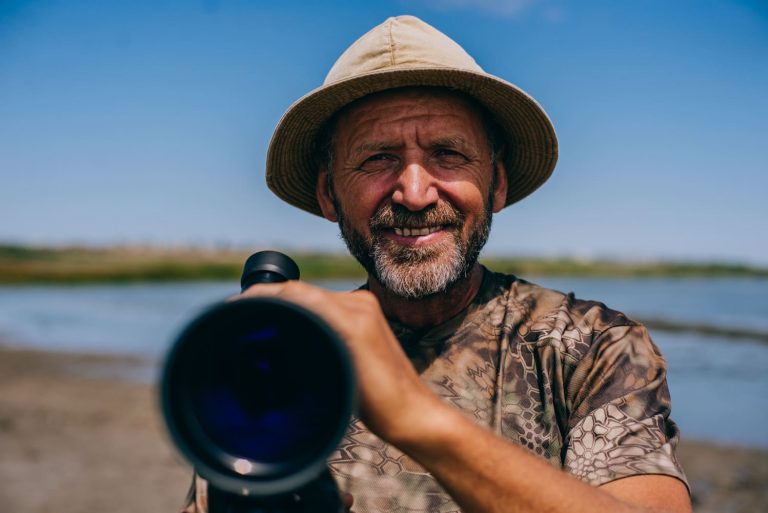
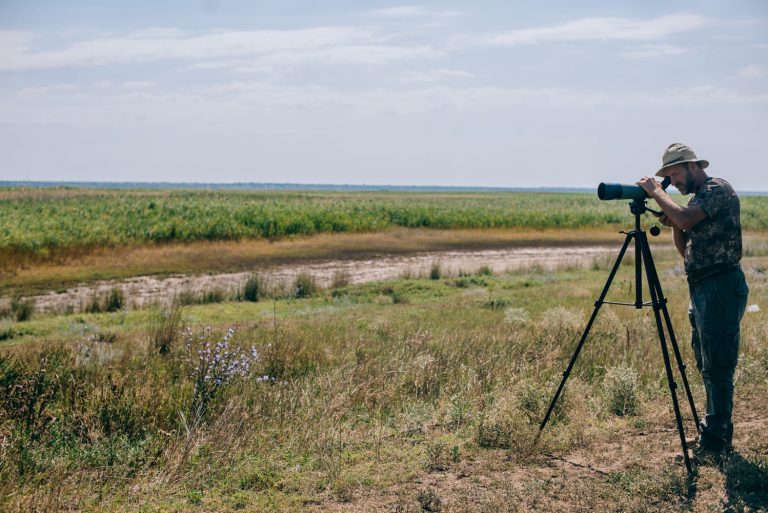
slideshow
Ivan Rusiev. Beginning of changes
— All my life I’ve dreamt of my job being my hobby. And now I am working with pleasure.
Ivan Rusiev, the park’s director from 2015 to 2018, now serves as the head of its science department. His task is to regularly research and monitor nature’s conditions in the park, for example, water salinity level in estuaries, number of bird species in the park’s territory, and comparative or qualitative analyses of the data.
— If you don’t monitor ecosystems, you lose the ability to manage these ecosystems for the future.
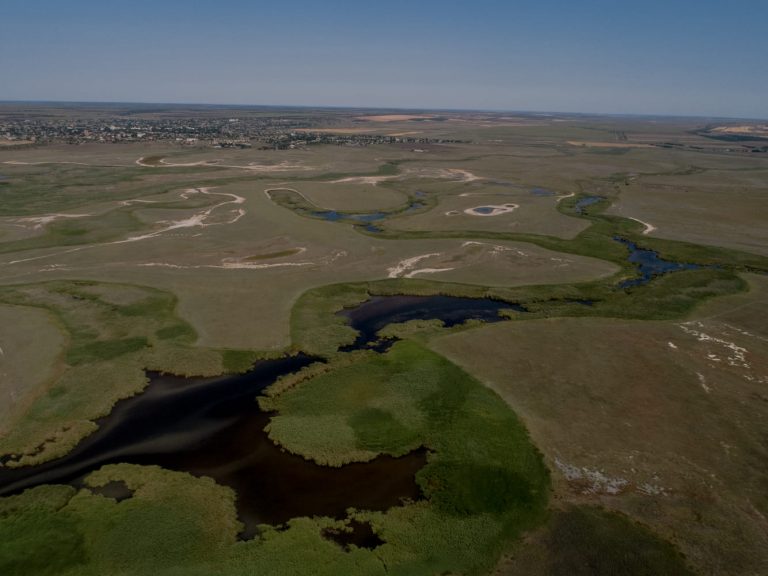
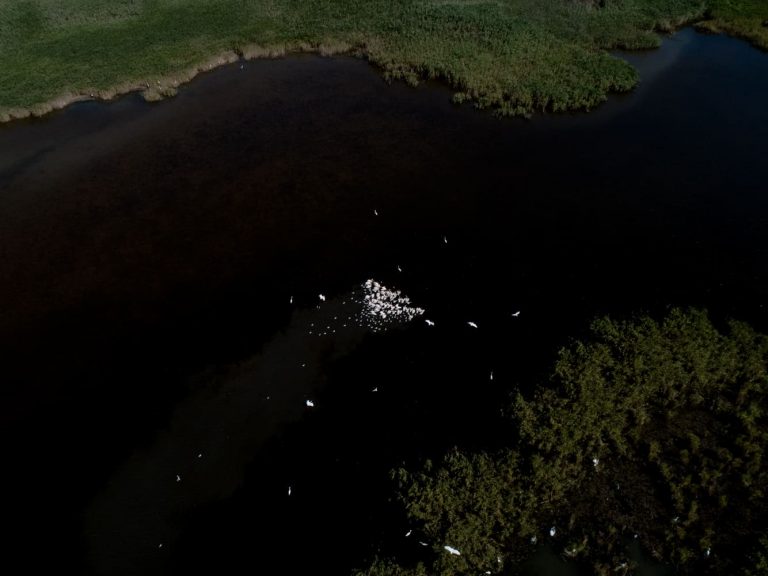
slideshow
Ivan remembers how, when he was young, he worked by the Aral Sea and saw with his own eyes it disappearing, affected by humans. The Amu Darya and Syr Darya Rivers, which replenished the Sea, had been exploited by the Soviets for industrial purposes (building of canals), so the Aral Sea started to vanish.
A similar situation in Tuzly Estuaries park is happening now with the Sasyk estuary, which also fell victim to the Soviet industrial project. In order to build the water-industrial complex Danube-Dniester-Dnipro, in 1978 the estuary was separated from the Black Sea with a 14-kilometre dam, and gradually it began drying out, its natural resources dwindling.
Ecosystem monitoring allows one to predict negative changes. In particular, seawater evaporation doesn’t affect cartography but has a significant effect on marine life — they lose the area to get food.
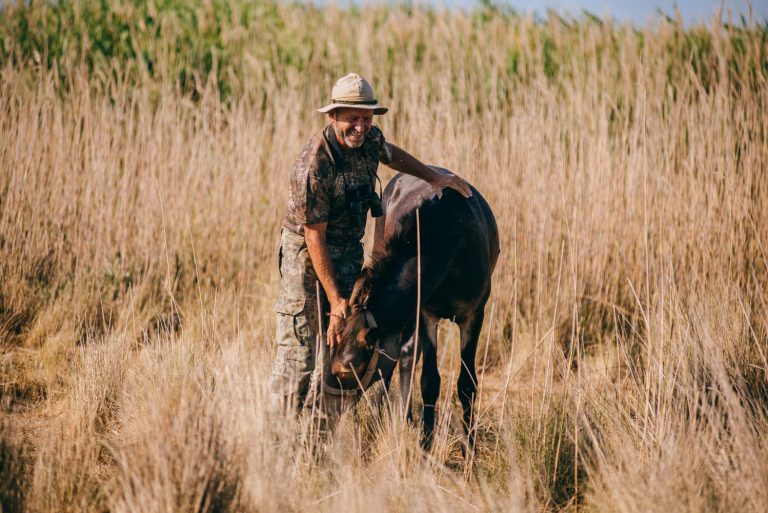
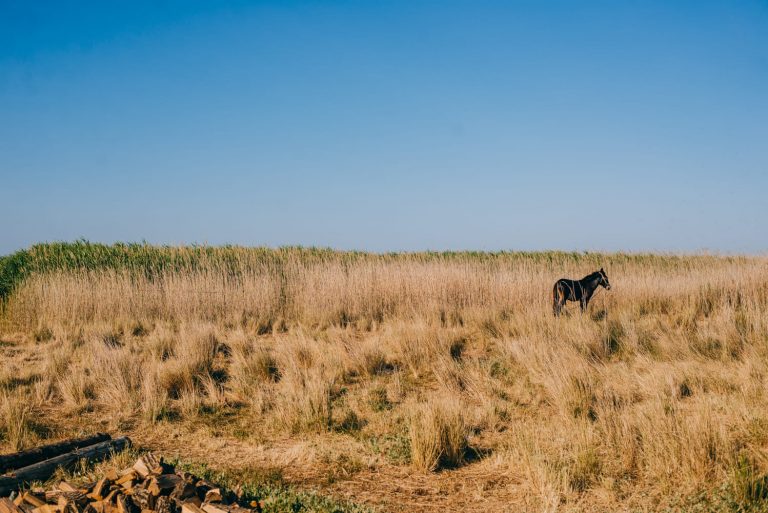
slideshow
Pressure on Rusiev because of his pro-activity, attempts to fight corruption and poaching in the park, transparent policies, and willingness to work according to the laws of Ukraine, resulted in Ivan’s resorting to more radical actions.
For example, as the director of the park, he had to secure safe working conditions for patrol workers, but he couldn’t do that because of the danger of facing armed poachers while patrolling. Then Ivan banned his workers to serve “in the field”.
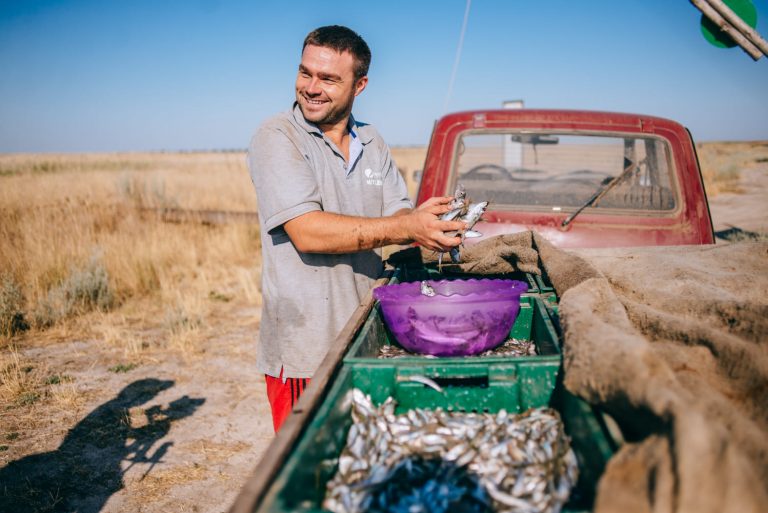
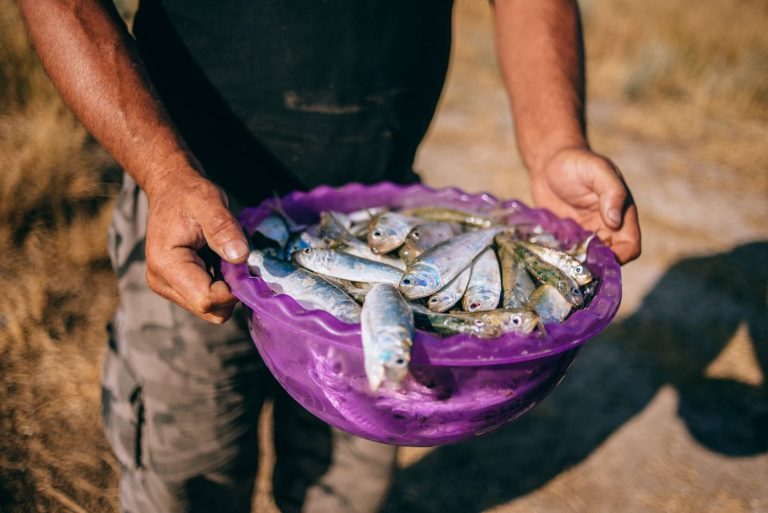
slideshow
For the time of his tenure as director, Ivan almost won the fight against illegal hunters. In some places, isolated incidents do still happen, but poachers don’t come as often as they did before. Tourism in the park has become more ecological and nature-oriented, and fishers from nearby villages obtained all the documents to go fishing in the estuaries legally.
By the way, the difference between fishers and poachers is in the very availability of such documents. In particular, it’s necessary to obtain a permit from the Fish Protection Service, as the territory of the park is a protected area. Poachers will not spend time and money for licences. Instead, they think, “What I catch is mine”.

Yellowstone was the first national park in the world. It was founded in 1872, but it took more than 30 years for residents and entrepreneurs from nearby villages to conceive that these areas are not exclusively for making money. Poaching was common here as well. American authorities had been fighting against it with the help of the army, developing tourism by building a railway and various tourist attractions after that.
Ivan Rusiev hopes that people in Ukraine will one day understand as well that nature preserved today is an investment in the future. Of course, Ivan doesn’t have much support from the state, but he tries to save the park with the resources in his disposal.
— We are dreaming that the authorities have respect towards the park. In America, for example, there are three prides: the national anthem, the flag, and parks.

Advocacy. Iryna Vykhrystyuk
Iryna Vykhrystyuk has been the director of the park since 2018. As well as Ruslan the ranger, she has to deal with poachers, farmers, and entrepreneurs every day.
Illegal vending (small shops and stalls on the beaches) has been flourishing within the park for years. The park’s management and workers have applied to the district state administration and the state architecture building inspection, but no measures to prohibit illegal street trade have been taken.
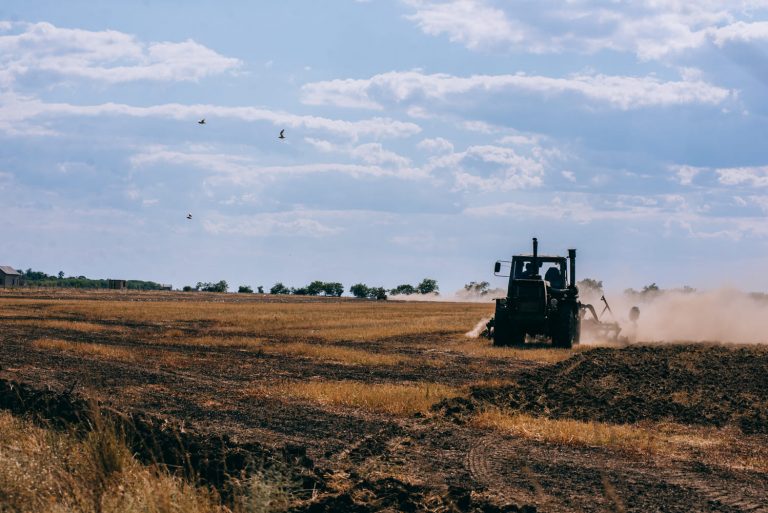
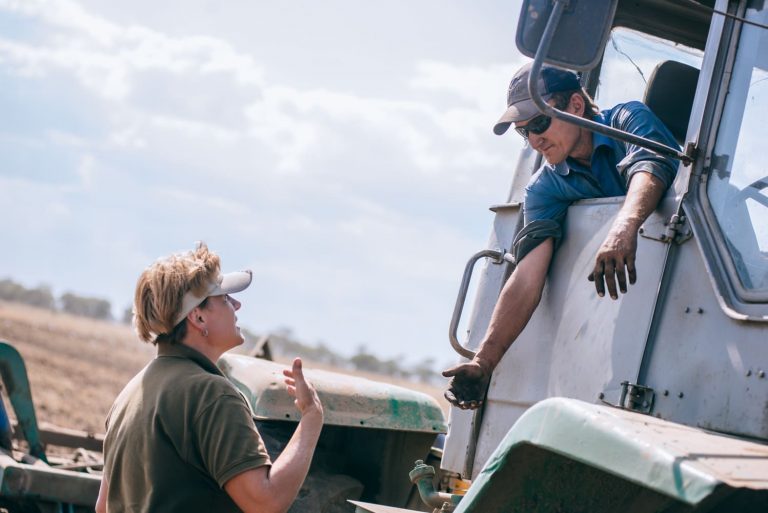
slideshow
Everyone who is willing to carry out commercial activity in Tuzly Estuaries national park or any other natural park (within a regulated recreation zone) is required to have a package of permits approved by the park administration.
Regulated recreation zone
The regulated recreation zone is an area where short-term tourist leisure, marking eco-hiking trails and routes are allowed. Forest clearing, fishing, hunting, and any other activity potentially harmful to nature, including commercial ones, are prohibited.— People are able to walk 400 metres farther so as not to pollute this area. But village administration has literally given out all the coastal areas for (private — ed.) development. They take away even more, pouring down the estuary, in order to increase their territories.
Farmers — residents of local villages — cultivate the land for their own needs. Fertile soils are exhausted from agriculture, which is why certain rules regulating use of these lands have been developed.
Shagany estuary, surrounded by coastal border strips, is a part of Tuzly Estuaries park. The strips are set to save a body of water from human impact — pollution and destruction — and are defined by water and land codes.
Shagany estuary is isolated and separated from the sea with a sand mound. Here, the width of these strips is minimal: only a hundred metres. But according to the water code of Ukraine, border strips are to be two kilometres wide.
— This is what, according to lawmakers, should have prevented a water body from the negative impact of farmlands. But what do we have here in reality? Coastal border strips are destroyed everywhere because cattle are driven here.

Photo provided by NNP Tuzly Estuaries
The absence of boundary markers on the territory of the park is one of the biggest problems that causes new troubles.
Since 2015, the park’s team has returned 130 hectares of the coastal border strips to the state and nature. They have had illegal farming stopped there. Yet there are more than 2,000 hectares of land still being used by farmers.
— Where it was possible, everything was ploughed out. Patches of natural lands over there, where floodplain meadows or solar lakes are, left untouched, only because they would bring no harvest anyway. As one farmer said: ‘If I could, I would be already ploughing the estuary.’
Since 1996, the Shagany-Alibei-Burnas estuary system has been a part of the Ramsar wetlands of Ukraine, and therefore has a special protected status.
Ramsar Convention
Ukraine is among signatory countries to the international Ramsar Convention on Wetlands. The Convention defines wetlands primarily as an environment vital for waterfowl and protects them.Iryna explains to farmers how important wetlands are for an ecosystem and that farmers can yield the same harvests due to higher quality agriculture, not from stolen land.
Particularly, wetlands provide humankind with freshwater and purify and filter groundwater. Tillage, be it manual one or done with heavy equipment, damages the shore of the estuary to various degrees, destroying it.
It takes 100 years for a steppe to fully recover, or at least 25 years — if people help nature to redeem what was lost. A steppe is no less important for an ecosystem than wetlands, as it, for instance, better absorbs carbon dioxide.
The latter is a part of atmospheric aerosols (greenhouse gases) that are the reason for climate change. The more carbon that is out there, the more damaging will be its impact on the nature of a region.
A steppe is like an upside-down forest. The roots of trees strengthen the soil and prevent abrasion (destruction) of the shores — the same way the forest strengthens the slopes of mountains.

The Eurasian stone-curlew. Photo provided by NPP Tuzly Estuaries
Birds and mammals
A steppe is a crucial environment for the livelihood of birds as well, Ivan Rusiev notes.
— This year, in the area we had fought back from farmers, for the first time we were observing the Eurasian stone-curlew. This bird species is listed in the Red Book of Ukraine. We’ve just seen them near the highway; they’re playing with chicks over there. They did settle and nest here right away after we had won back [the land].
Small mammals listed in the Red Book of Ukraine also live on the territory of the park. Ivan has recently spotted the common hamster, but the speckled ground squirrel (Spermaphilius odessanus) and the typical (steppe) marmot have not inhabited the park for several years. Ivan dreams of restoring their population and also of bringing the saiga antelope and onagers (Asian wild donkeys) to the park.
— We’ve always taken space needed for recovery away from nature. Nature has its own right to live. And by now, we have already witnessed tons of factors, proving that everything has been backfiring on humans. With negative phenomena. But, for some reason, we are making the same mistakes again and again.
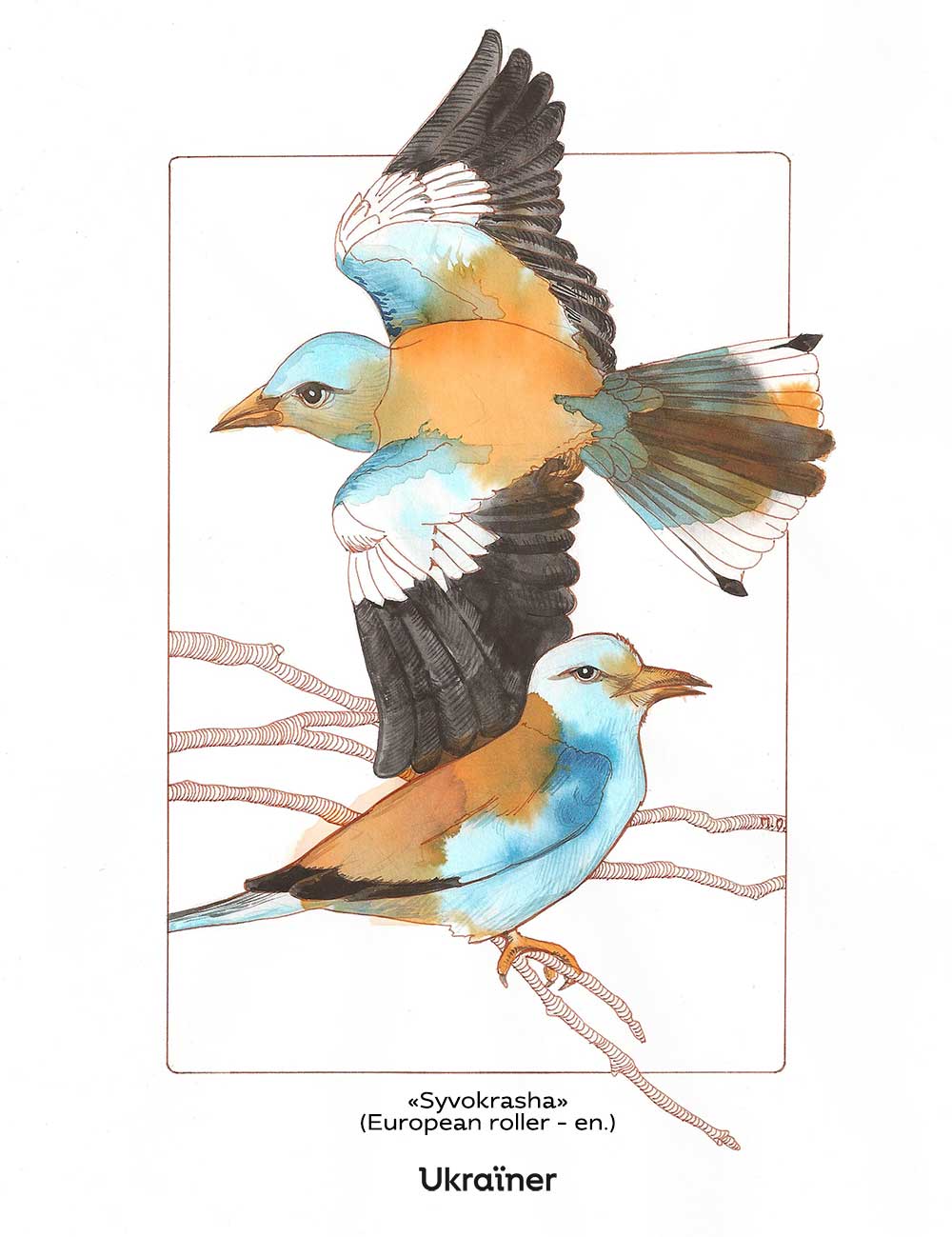
Within the structure of the park there is a research centre where people study flora and fauna of the region. Botanists study more than 700 plant species, and ornithologists study more than 260 bird species. There are also experts researching amphibians, reptiles, mammals, and insects, among others.
There are more than 40 endangered species of birds, enlisted both in the Ukrainian and international Red Book:
— Let’s take the European roller, for example. It’s very bright, and chooses only cliffs for its habitat. We do have 150 kilometres of the mainland of the park, where there are many cliffs, around 100 kilometres of them, so it nests there in burrows.
Except for reclaiming territories from farmers and poachers, the park’s workers create the conditions for animals and birds to nest and feel safe.
— There’s no place for nesting, because an ecosystem is formed this way. There are a lot of sand spits, but the spits are very attractive for terrestrial or winged predators. And when birds start nesting, predators find and destroy the nests.
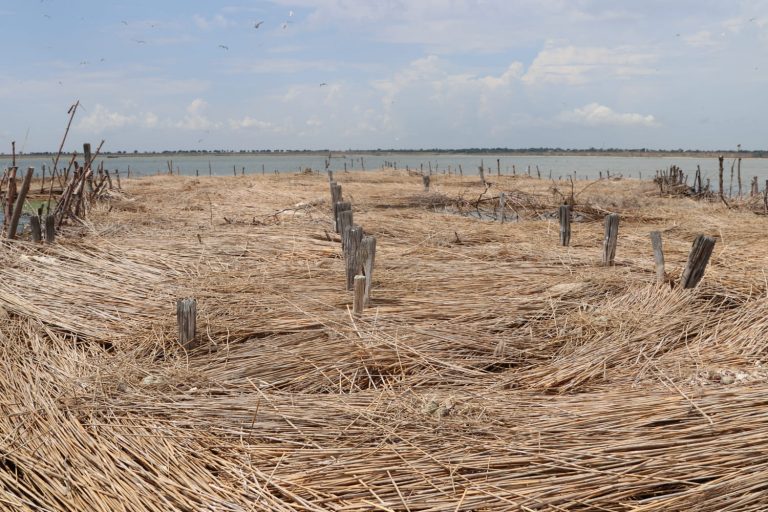
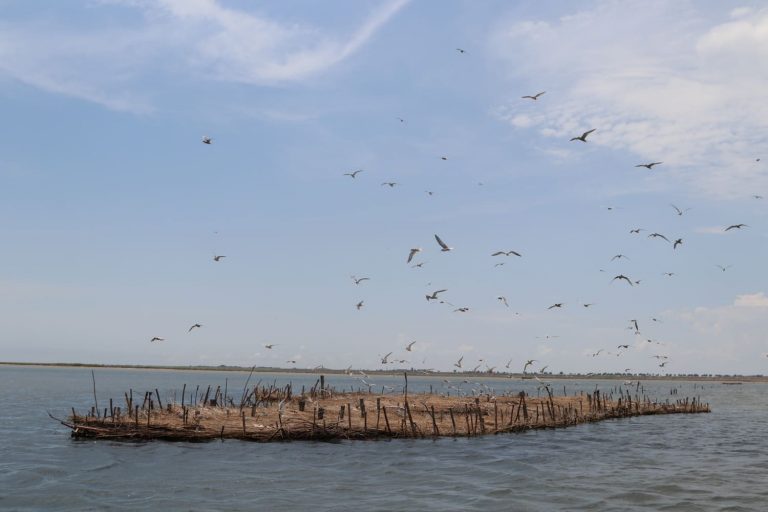
slideshow
Three years ago, Ivan and his team started building artificial islands. Seven of them have become home for the Pied avocet, common tern, and the white and Dalmatian pelicans.
It should be considered as a victory, since, for example, a pelican is extremely picky about new nesting places, and it may take around five years for one to inhabit an island.
Ivan explains that pelicans can find food here. They are not a hunting species and have never been one. But fishers say that pelicans eat too many fish, thus, are rivals for fishers. Ecologists assure that where there are pelicans there are fish, and all of these fish should be enough for both people and pelicans.
The food chain always includes birds: they digest small animals, say, worms. Only such an ecosystem can be called a healthy one.

I am a happy birdwatcher
The area of the park is 28,865 hectares, of which about 20,000 hectares are the waters of the estuaries. Primarily, local wetlands are vital for waterfowl; over the territory lies one of the biggest migratory routes for birds as well.
Workers call the park “Bird Eldorado”, that is “a dreamland, a golden land”, as this area, they assure, is of great interest for birdwatchers. The difference between ornithologists and birdwatchers lies in the fact that the former are scientists, researching birds, while for the latter watching birds is predominantly a hobby.
Park worker Iryna Burlachenko says how some guests of the park discovered their passion for birds here, for the first time, and came back later, with binoculars and a camera.
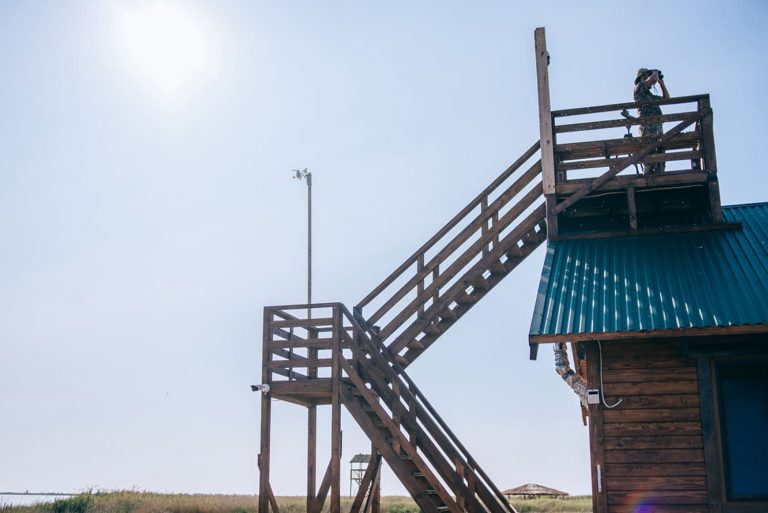
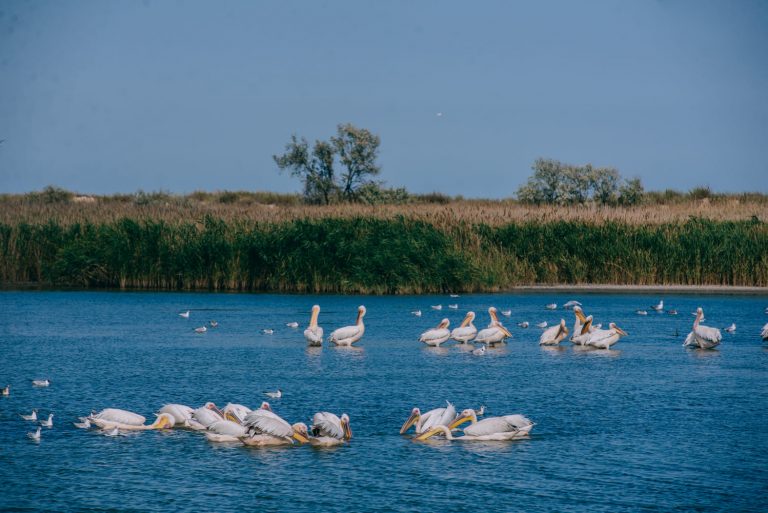
slideshow
The most beloved place for birdwatchers is a bungalow on a shore of the estuary. If you go there in the evening without scaring the birds away, in the morning you may see them roaming around the lodging and literally surrounding guests of the park.
In the park, in particular around the bungalow, from May to August there are plenty of pelicans to see. They have become certain symbols of Tuzly Estuaries, Iryna says.
— When tourists come to us, for some of them pelicans being here is a pure surprise: ‘Are there pelicans in Ukraine? And they’re right here?’ Abroad, they were promised to ‘see some pelicans in some national parks, maybe, if they were lucky’, and they say: ‘We never saw them there, and here we are just walking, and they are everywhere.’
Vasko van der Bun is a Dutch journalist for the Financial Day newspaper, but his hobby has nothing to do with his occupation. He is a birdwatcher, and this passion has been with him since childhood. He used to work as a birdwatcher in his homeland and admits that such a job leads to loneliness, so he switched to journalism, keeping his love for birds as a hobby. Passing through Ukraine, he was exploring the bird world of Tuzly Estuaries.
— This estuary, together with volunteers protecting it, is a paradise for birds, hence for birdwatchers. For several hours I’ve watched birds I’ve never come across in my life. Thus, I am a happy birdwatcher.
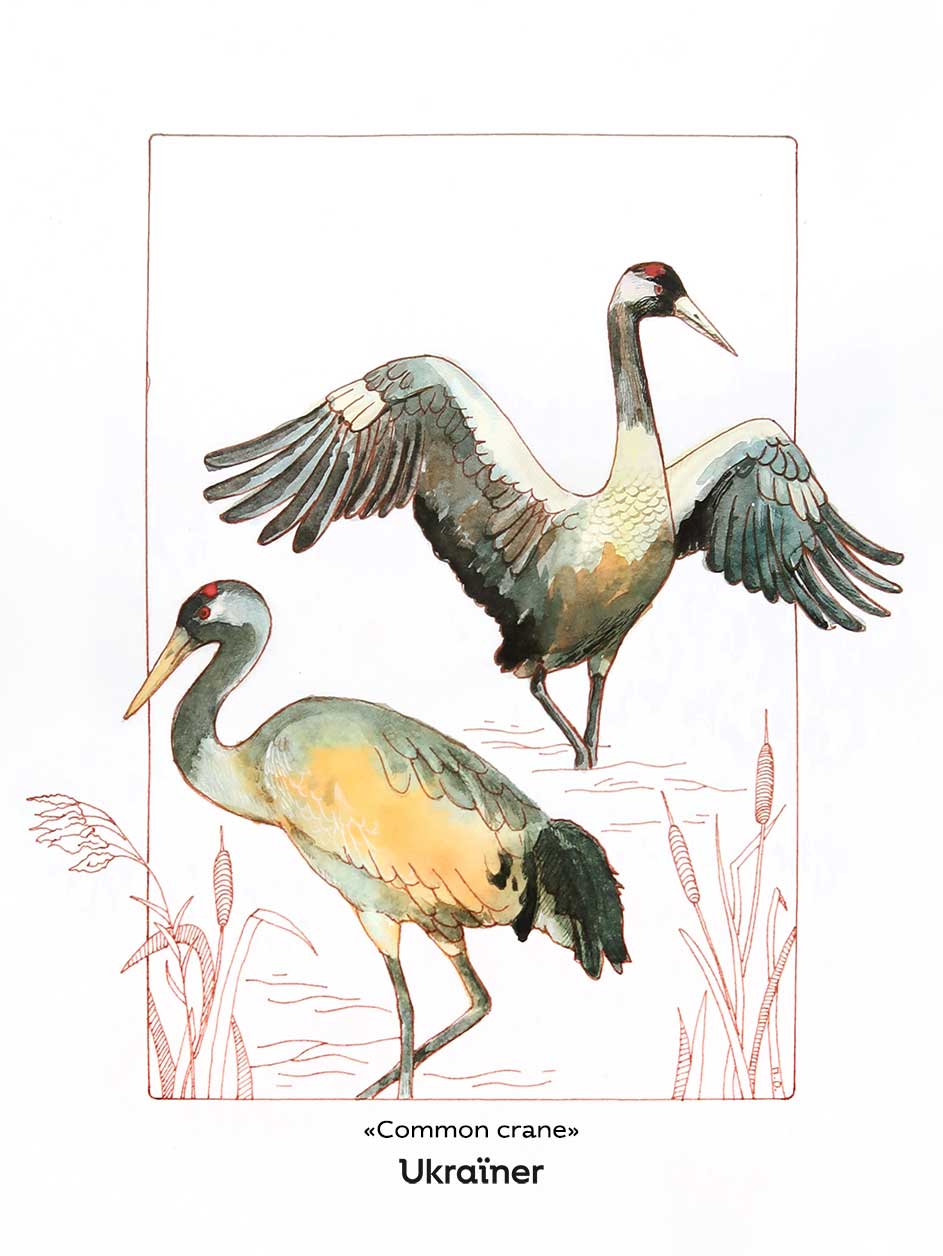
Among all the birds he had got to see here, he singled out the common crane and the pink pelican. Cranes stop in this area in the middle of summer, on their way from Siberia to Africa for the winter.
Volunteers and kids. Iryna Burlachenko
Former teacher Iryna Burlachenko came to work in the park in 2016. Inviting her, the current director said, “Do you want to make a U-turn in your life?” Iryna did, so she left teaching and came to the park.
Iryna enjoys not knowing what will happen in the park tomorrow: a fight with poachers, an excursion for tourists, or conversations with journalists. She says she’s comfortable, in her element here.
— It’s not about me looking at my watch and saying, ‘Oops, sorry, but our working hours are till 5.30 pm.’ This is ridiculous: when we are off to the park, we can come at 10 pm; by midnight, we can stay for the night here. It’s more like a way of life than a job.

Until recently, there were almost no tourists in the park, so Iryna with colleagues started to develop the tourist potential of the reserve: they created routes and a list of paid services and set up a visitor centre.
There are no hotels or guesthouses on the territory, but all conditions for nature lovers are created. The camping area has electricity and internet access. Guests of the park who prefer more comfortable accommodations may stay within the recreational zone (there are no capital buildings on the park’s territory).
In summer 2018, a border section between Shagany and Malyi Sasyk estuaries was opened, where now security guards are on duty, scientific researchers are working, and tourists are birdwatching. Where poaching wagons once stood, a security checkpoint, a lookout tower, a big pergola, and two bungalows were built. One of the tourist routes of the park, called Tuzly Amazonia, passes through this area.
All the infrastructure of the park was installed by volunteers. Iryna says that almost all volunteers were involved through a Facebook-page of Ivan Rusiev, where he talks about the park every day. Volunteers keep asking if workers need some assistance (almost always they do), and, in some time, they appear with building materials, instruments, and more.
Some people help with food for children expeditions, some provide rooms for new volunteers in their guesthouses, some build breakwaters, bungalows, and camping spots, and some allocate funds for these developments. Not just individual people come here to volunteer — organisations do as well. Thus, WWF (World Wide Fund for Nature) volunteers often help to restore Ukrainian parks. This is an international organisation, and its aim is to stop degradation of Earth’s natural systems.
— Our only vehicle, ‘Nyva’, was burnt down by poachers. Again, volunteers organised themselves and bought us a car with their own money.

Photo provided by NPP Tuzly Estuaries
Expeditions for children
Older people who were born, living, and raised within the Soviet system of values don’t perceive national parks in a proper way. Such an attitude was crystallised because frequent visitors of such parks were the authorities, while an average person could hardly get there. Hence, there’s no trust in parks’ administrations in Ukraine.
Ecological education for elders is no less important than education for children. If kids should be taught how to behave in nature, elders should be weaned from behavioural habits harmful to nature. The park’s workers have been holding expeditions for kids for the second year in a row, says Iryna Burlachenko.
— We started an interesting education project in 2018: an expedition for kids. We called it ‘Tuzlym’ (from ‘Tuzlovsky Lymany’, or ‘Tuzly Estuaries’ in Ukrainian — ed.). We choose a symbol of the expedition every year.
The first expedition had a toad as a mascot, since wetlands make up the main part of the park. This year, it is a pelican, as there are plenty of them here and kids love it.

Photo provided by NPP Tuzly Estuaries
During the expedition kids are exploring nature “in nature”, not in the classrooms. This way a child is going to perceive everything visually. The park’s staff is elaborating the programme together with scientists. According to Iryna, for the time of expeditions they turn into storytellers and show children the world in an easy and interesting way. Every day there is a cultural programme: they have a bonfire and sing.
— We chose local children to be our listeners. It’s because they are growing up, and the way they will be treating the environment and using natural resources will generally affect ecosystems. Because they are the park’s neighbours.
One can get into the expedition through a contest. At schools, kids have to organise an effective waste management system, and the winners will join the expedition.
Every expedition day is very rich. They wake up at seven in the morning, do exercises, have breakfast, then start the lessons. Thirty children are divided into class groups. During field trips with scientists in nature, kids are taught how to take field notes, what to pay attention to, and how to make a herbarium and describe birds. Iryna is convinced that the children feel like real scientists.
After lunch, everyone rests, then they go over the results and hike to the sea. In the evening all together they discuss topics, particularly how to handle trash and why people are not allowed to litter in the park.
A weeklong, and now a 10-day expedition, without internet access and other blessings of civilisation must be a challenge both for organisers and kids. But the diversity of nature, everyday activities, and observations make up the lack of usual leisure for kids.
— Once a diver told us he had found an old net with plenty of crabs and fish entangled. With their own hands, children set the crabs free — the big, huge ones — releasing them back into the sea.

Photo provided by NPP Tuzly Estuaries
Local kids are mostly from families of poachers and fishers. But during the expedition they don’t take from nature the way their parents illegally do — on the contrary, they return to it. It’s important to show adolescents the harm a human can do to nature in order to make them understand the scale of such effects.
The park’s employees started to seek costs after they had announced the event for the first time. From the state budget they managed to get the amount, enough to buy meals for several kids only, so that’s where volunteers and sponsors came for help, Iryna recalls.
— Idea and passion: when they guide you, when you really want something and do a good, fair deed, the costs come along.
With the annexation of Crimea, Ukraine has lost about a third of its territories with the status of national nature reserves, which also made up a third of all protected areas in Ukraine. In particular, the Crimean nature reserve was passed on to “the Administrative Directorate of the President of the Russian Federation on a pro bono basis”, which resembles the Soviet practice of turning protected areas into zones of private use for authorities. In the 1950s, “recreational and hunting” services were already being provided on this reserve. In the example of Tuzly Estuaries, you can witness how difficult it is to restore parks and reserves after destructive poaching activity.
National parks, above all, are created to save and pass pure nature on to the next generation. This is what the team of Tuzly Estuaries has been pursuing for the last few years.

